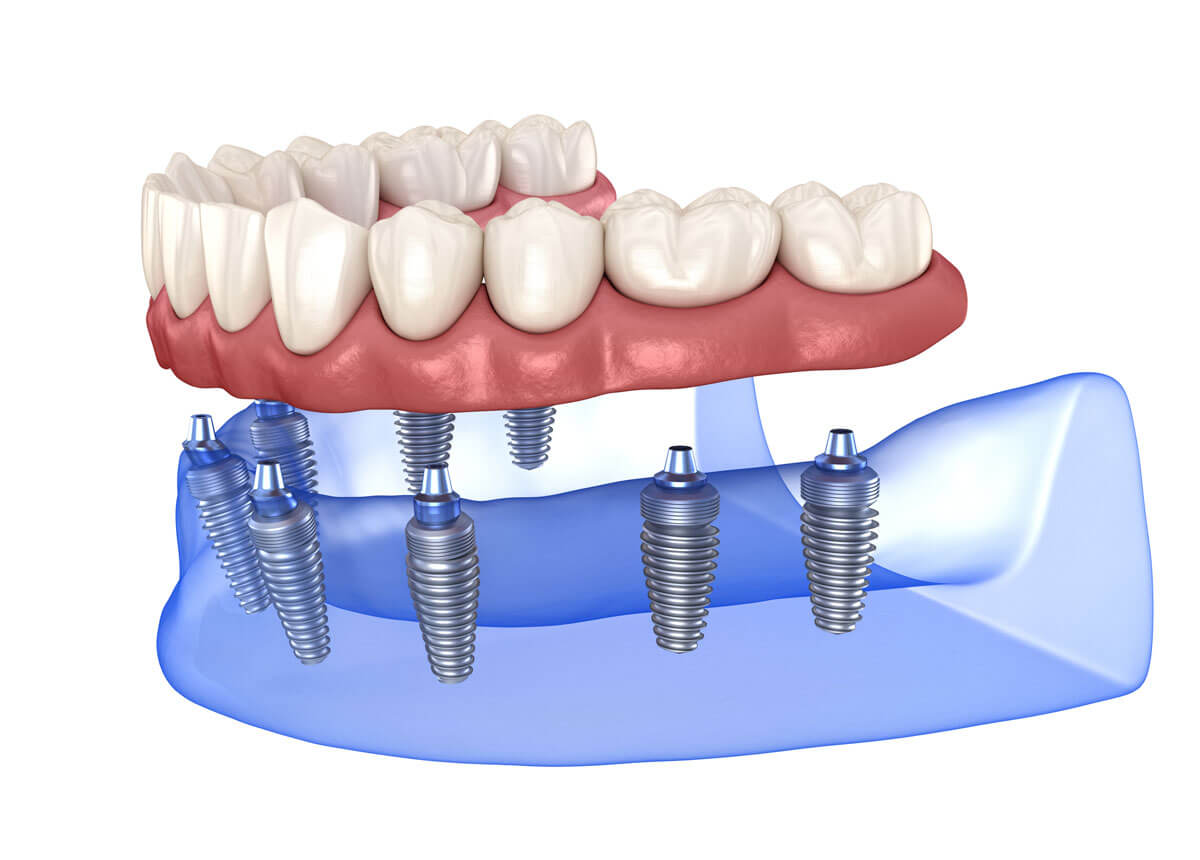The Ultimate Guide To Dental Sense
The Ultimate Guide To Dental Sense
Blog Article
4 Easy Facts About Dental Sense Described
Table of ContentsThe Dental Sense IdeasThe smart Trick of Dental Sense That Nobody is DiscussingThe smart Trick of Dental Sense That Nobody is DiscussingThe Ultimate Guide To Dental Sense
are medical gadgets surgically implanted right into the jaw to bring back an individual's capability to eat or their appearance. They provide assistance for synthetic (phony) teeth, such as crowns, bridges, or dentures. When a tooth is shed due to injury or disease, a person can experience complications such as rapid bone loss, faulty speech, or changes to chewing patterns that result in discomfort.Oral implant systems include an oral implant body and oral implant joint and might additionally consist of an abutment addiction screw. Professional teeth whitening. The dental implant body is operatively inserted in the jawbone instead of the tooth's root. The oral implant joint is generally connected to the implant body by the joint fixation screw and prolongs through periodontals into the mouth to sustain the attached man-made teeth
(http://tupalo.com/en/users/8103990)Structure of The Dental Implant System choosing oral implants, talk to your dental copyright concerning the possible advantages and dangers, and whether you are a prospect for the procedure. Things to take into consideration: Your overall health and wellness is a crucial consider identifying whether you are a great prospect for oral implants, how much time it will certainly take to recover, and how much time the dental implant might remain in location.
Smoking may influence the healing procedure and reduce the lasting success of the dental implant. The recovery procedure for the implant body might take a number of months or longer, during which time you commonly have a temporary joint in place of the tooth. the oral implant procedure: Carefully comply with the oral hygiene directions offered to you by your dental provider.
Dental Sense for Beginners
Implant failure can cause the demand for one more procedure to take care of or change the dental implant system. Recovers the ability to chew Recovers cosmetic look Aids keep the jawbone from reducing due to bone loss Preserves the wellness of the bordering bone and periodontals Aids maintain surrounding (close-by) teeth steady Improves quality of life Damages to bordering natural teeth throughout implant positioning Injury to the surrounding tissues throughout surgical treatment, such as sinus perforation Injury throughout surgical treatment (for instance, crack of bordering jawbone) Insufficient feature, such as really feeling like the teeth do not bite with each other normally A sensation that the tooth is loosened or twisting in position arising from an abutment screw loosening up Implant body failure (looseness of the implant body) as a result of systemic infection, which may be a lot more most likely in people with unchecked diabetics issues because of neighborhood infection in bone and gums sustaining the implant body as a result of delayed recovery, which might be much more likely in people who smoke Problem cleaning up the gum tissues around the implant, resulting in poor oral health Without treatment gum illness Post-surgical pins and needles as a result of nerve impingement or damages Constantly alert healthcare suppliers and imaging professionals that you have dental implants before any magnetic vibration imaging (MRI) or x-ray procedures.
FDA is not knowledgeable about any kind of damaging events reported for MRI or x-ray procedures with oral implants. Oral implants systems are generally made of products that adhere to worldwide agreement criteria of the International Company for Standardization (ISO) or ASTM International. These criteria have information of what makes a risk-free product.

An oral implant is a structure that replaces a missing out on tooth. With screw-like tools, the surgeon inserts a dental implant into the jawbone, and it acts as a support for a synthetic tooth, called a crown.
The Ultimate Guide To Dental Sense
Some people are not qualified for oral implant surgical treatment. It is for oral surgeons to operate individuals with: intense illnessuncontrollable metabolic diseasebone or soft tissue illness or infectionIf these issues are dealt with, an individual can have the surgical treatment. In, dental cosmetic surgeons avoid operating on individuals with: If individuals with any of the find out here now above go through dental implant surgery, there is a higher threat of the implant falling short.

Dental dental implant surgery is an individualized process. Offer you time to recover. Affix the message and last crown, bridge or denture.
Next, your surgeon will thoroughly position the dental implant right into your jaw. Ultimately, your surgeon will rearrange your periodontals and close the cut with stitches. If your implant is near the front of your mouth, your dentist will certainly make a short-lived tooth for you to put on until you recover. That means, you won't have a void in your smile while you recover.
The 6-Minute Rule for Dental Sense
During the healing stage, your jawbone must fuse to the dental implant. This procedure can take anywhere from 3 to 9 months.
When your implant heals, your dentist can connect the joint (tiny port message) and your final restoration (crown, bridge or denture). This typically takes concerning one hour to complete and might require a 2nd small surgery. You shouldn't feel any pain during your dental implant treatment because your company will use medicine to numb your gums.
Report this page